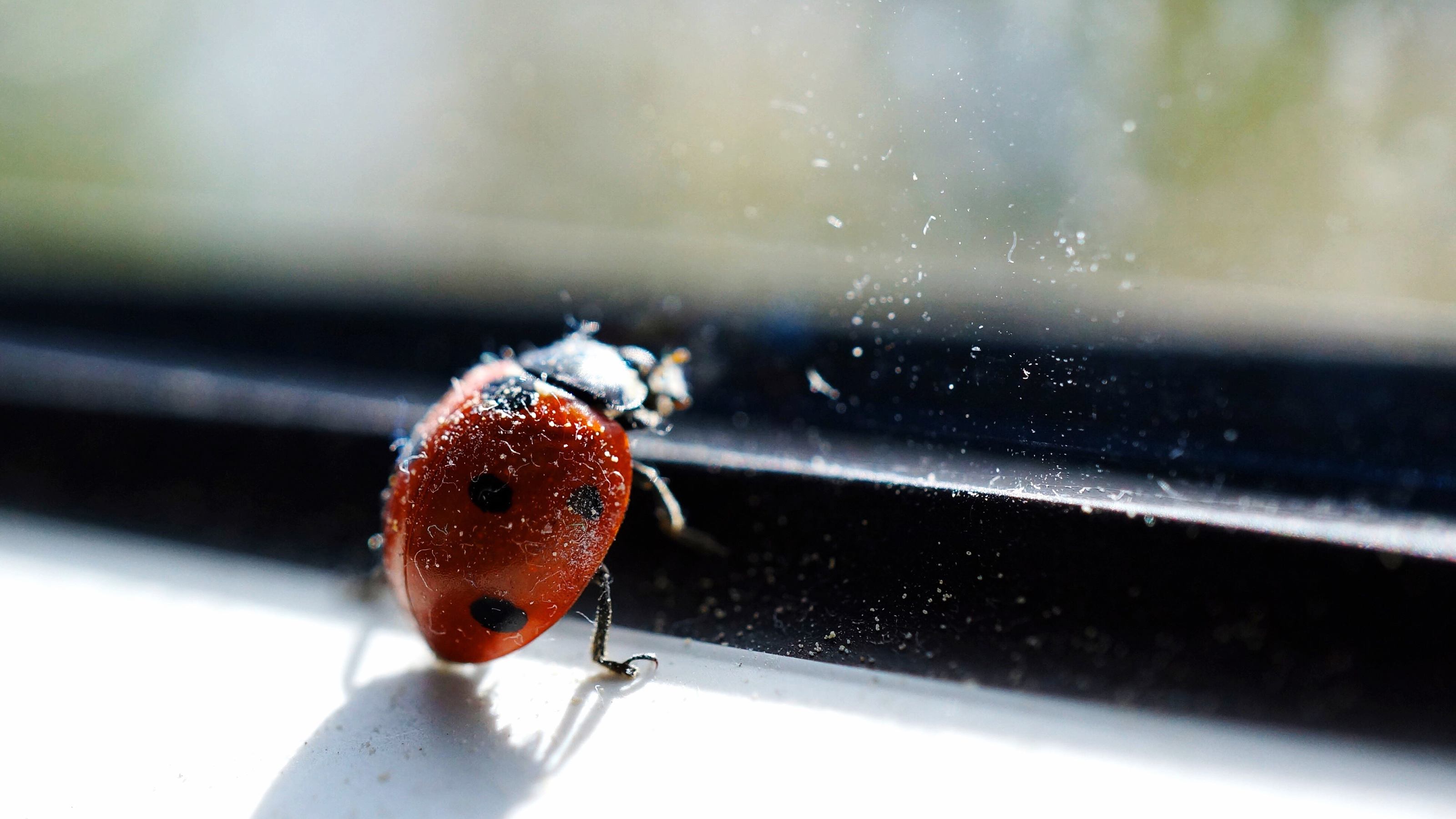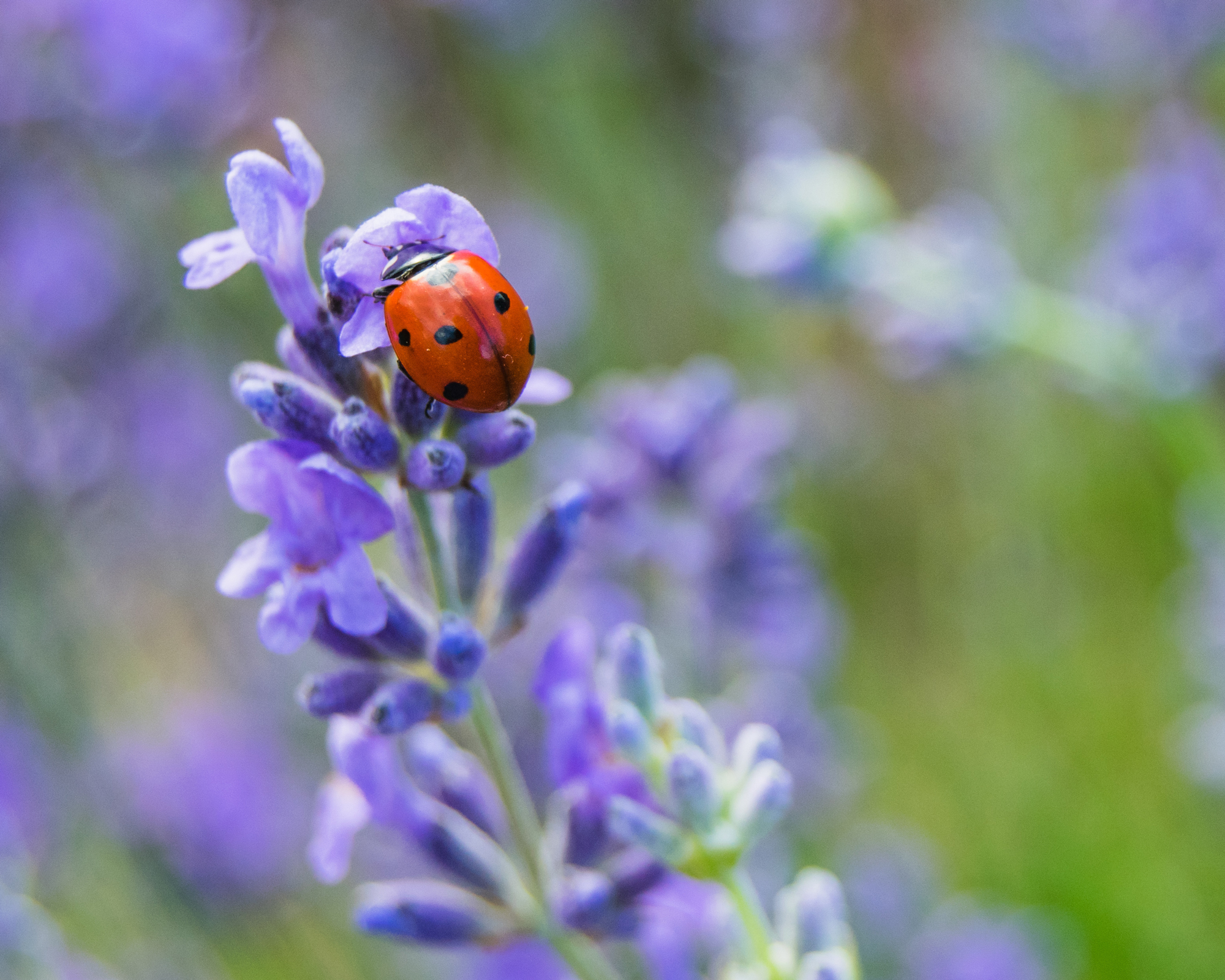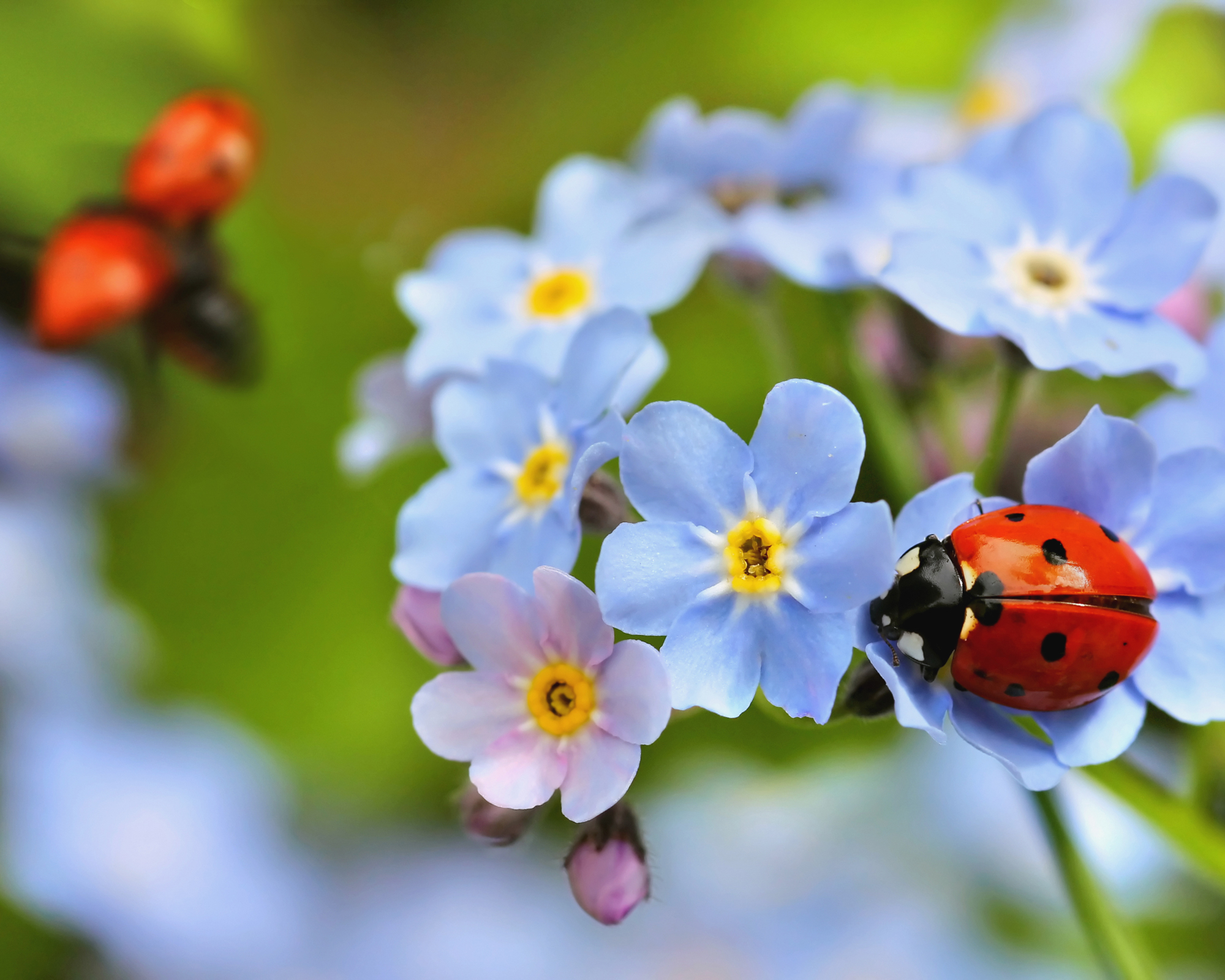
Christina Chrysostomou
Want to know how to get rid of ladybugs in the house? While a ladybug or two is pretty normal in most homes around fall and winter, a huge number of them nestling in your doorframe can be alarming. While ladybugs don't harm humans, no one wants dozens upon dozens of them congregating in your house (as yours truly discovered one winter).
Learning how to get rid of flying insects at home can be a challenge, but you'll be pleasantly surprised that with ladybugs, it's a little easier than, say, with flies. Full disclaimer: you won't find methods that involve killing ladybugs in this article.
While a mass infestation may call for professional pest control, these are quite rare. Ladybugs are hugely beneficial to our gardens and are harmless, so we strongly recommend trying these expert-led methods for removing them (and relocating them to your rose garden) before using any kind of chemical control. As nature's natural aphid deterrent, they're great if you're wanting to get rid of these annoying green sap-sucking insects without resorting to a shop-bought solution.

Why do I have so many ladybugs in my house?
First of all, though, you may be wondering how so many ladybugs found their way into your home in the first place. Michael Thome, Associate Certified Entomologist and Technical Service Manager for Ehrlich Pest Control, explains that 'The biggest attractant is heat and light. This time of year the sun heats the west and south sides of homes. The Lady Beetles are attracted to that heat and light on those surfaces and congregate, often in large numbers. From there, they find gaps and cracks in the home around windows, vents and flashing, to gain access to the home.'
Heat rises, so you're likely to see more ladybugs higher up in the home – close to the ceiling or in your attic, for example. Live in the country? You may get more ladybugs in your home, since 'dwellings close to fields and woods tend to be more highly impacted. From there, they continue to work their way inside, finding a nice cozy void to spend the winter. On warm days over winter, you may see them in your home, especially around window areas.'
Typically, ladybugs are not inside your home for food, so you should bear this in mind when trying to get rid of them.
How to get rid of ladybugs in the house
1. Seal up your home
As Thome says, 'the best way to deal with them is to seal up your home! Replace damaged window screens, seal gaps around windows, vents, and utility penetrations and ensure you have tight-fitting door sweeps.' Another reason to stop drafty doors in your house and insulate windows. The sustainable home improvements that protect your home from energy loss also will help keep ladybugs out.
Get small space home decor ideas, celeb inspiration, DIY tips and more, straight to your inbox!
We recommend that you keep a tube of Gorilla waterproof caulk and seal around the home. It's cheaper than calling out a builder and will get rid of ladybugs in the house.
2. Keep the areas they frequent cold
Of course, if you live in a tiny apartment and are seeing lots of ladybugs next to your ceiling this method won't work. Larger homes, however, will really benefit from keeping the areas where ladybugs tend to congregate as cold as possible. This is especially useful for attics, hallways, conservatories, and unused spare bedrooms.
As Josh Wakefield, an experienced pest controller from Florida-based Truly Nolen Pest Control, explains, 'ladybugs sneak into the interior of our homes for the warmth; therefore, the best thing you can do to safely repel ladybugs without harming them is to keep the interior of your home colder than it is outside!'
Typically, even a difference of a couple of degrees is enough to deter ladybugs, so turn down your thermostat in ladybug hotspots. It's also a great idea to get thermostatic valves for those areas you want to keep cold while still heating your living spaces.

3. Wait for them to leave
Obviously, if you're really grossed out by them and want the ladybugs gone as soon as possible, this isn't ideal. But if you're simply worried that the ladybugs have taken up a permanent residence in your home, don't be. Wakefield reassures us that 'If they do get into your home, the reality is they will soon go away on their own. Once the temperature starts to rise again, they will go right back outside once they find their way.'
Remember: ladybugs don't have anything to eat in your home. According to Wakefield, 'ladybugs primarily eat aphids, so as long as the inside of your home is not also covered in aphids, I would not be overly concerned about them.' As soon as they wake up in spring and get hungry, they will leave. Contrary to popular belief, they don't breed inside people's homes either, so even if you have a lot of them inside your house, you won't get ten times more.
4. Call in a professional to install barrier material
Once the ladybugs have left your home for the summer it makes sense to call in a professional. Thome advises that 'the best time to call a pest professional is before you have an infestation. They can provide a barrier application of material to help prevent the overwintering pests from entering your home. These treatments should be timed in August or September dependent on the weather in your area.'
So if ladybugs have been a problem before, stop it happening again with barrier materials around possible routes in.
5. Try making light traps
Thome gives this common method for getting rid of ladybugs the green light, but with a caveat: 'Light traps have shown some effectiveness in catching them but those are dependent on days when the beetles are active.' Light traps typically involve using a plastic bottle with the top cut off and a battery-powered LED light placed inside. In theory, the ladybugs will flock to the light, gathering inside the bottle, making it easy to relocate them.
In practice, if you ladybugs are already snug asleep in a door crack, they might not be tempted enough by the trap. It's a cheap and easy method, though, so is worth trying.

6. Cut off the communciation trail with dish soap
Did you know ladybugs send signals to each other, to let each other know about a cozy environment that's optimal for survival? Cutting off this line of comms is key to getting rid of ladybugs in the house. And it's cheap and easy to do... All you need is a bit of washing-up liquid and water.
'Once you see a ladybird, make sure to wash the area with soapy water as this keeps the surfaces free from any chemical trails from the ladybugs that may attract others. Adult ladybugs can release pheromones that attract others nearby and invite them into the same space, causing them to cluster in one location in your home.' says Martin Seeley, CEO, MattressNextDay.
Our top tip is to invest in a set of bottle brushes, which you can find for cheap on Amazon. This way, you can get right into tight spaces where a sponge would be too thick.
7. Use spices to send them on their way
If you like cooking up a storm in the kitchen – you're bound to have this seasoning in your spice rack or kitchen cupboard. Aromatic as they are, bay leaves are a natural repellent for ladybugs. All you need to do is place a few in a net pouch near the affected area to deter them.
How to get rid of ladybugs: home remedy
This might be surprising to hear, but the best home remedy for ladybugs in your home is the best vacuum cleaner. Vacuuming up the ladybugs in your house will not harm them – as long as you empty out the vacuum straight away outside. It's easy and quick and there's no mess. After you've relocated your ladybugs outside, it's a good idea to give the area they inhabited a thorough clean to discourage them from returning. You may even want to use a handheld vac to ensure that you don't end up crushing them by accident.
You may have seen diatomaceous earth recommended as a remedy for ladybugs, and it is effective, but be aware that this method will kill the ladybugs. Srebnik reminds us that 'typically, no one wants to harm Ladybugs since they are a beneficial insect rather than a true pest!' So, we don't recommend using diatomaceous earth or any other pesticide, natural or chemical.
Is there a scent that repels ladybugs?
You may have read that citronella oil or peppermint oil repels ladybugs. Unfortunately, our pest control experts can't confirm that essential oils work for repelling ladybugs. Wakefield tells us that 'I have yet to see any replication of this working consistently enough to recommend any of them.' So, keep your essential oils for your best essential oil diffuser and get insulating instead.
What should I do if I find a harlequin ladybird?
There are more than 40 types of ladybird in the UK, and while many of us are used to seeing the common red variety, some species can look a little scary. But there's no need to be spooked if you see a black ladybird.
Dr Max Barclay, senior curator of beetles at The National History Museum, says, 'These ladybirds don't want to be in your home any more than you want them there. If people squash them, they can stain walls with their defensive yellow chemical secretions which can be slightly smelly.'
'The best thing one can do is 'to help them find their way out,' Barclay adds. 'The ladybirds will be grateful, and may even repay the favor by eating some of the greenflies on your roses.'
Anna is a professional writer with many years of experience. She has a passion for contemporary home decor and gardening. She covers a range of topics, from practical advice to interior and garden design.
- Christina ChrysostomouFormer acting head ecommerce editor